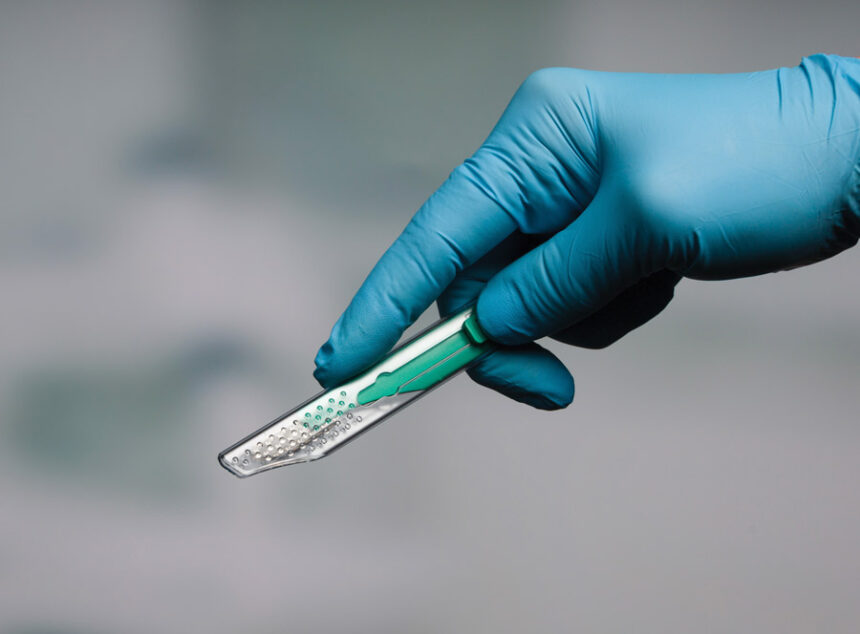According to the Centers for Disease Control (CDC) there are approximately 800,000 needlestick injuries each year, and more than 1,000 health care workers contract serious infections from these incidents. Nearly two-thirds of nurses report being accidentally stuck at some time in their career. Bloodborne pathogens spread through needlestick accidents include HIV, hepatitis, herpes, gonorrhea, syphilis, and tuberculosis.
Most injuries are preventable, and it is estimated that safety syringes can reduce accidental needlestick injuries among health care professionals by 80 percent, and with worker education, this number increases to 90 percent. Seventy-five percent of all exposure incidents are caused by disposable syringes, and could be prevented by using syringes which incorporate resheathing or retracting designs.
OSHA requires health care providers to have an Exposure Control Plan (ECP) in place, and review it at least annually. As part of the Needlestick Safety and Prevention Act of 2000, which modified the OSHA Bloodborne Pathogens standard, employers are required to identify, evaluate and implement safer medical devices on at least an annual basis to evaluate innovations and technological developments that eliminate or reduce exposure to bloodborne pathogens. It’s important to remember that part of the ECP annual review includes evaluating potential employee exposures (especially in light of any new procedures performed), evaluating employee exposures that have occurred during the past year (a Sharps Injury Log must be used throughout the year) and then performing an annual evaluation of safety devices to determine if any newer, more superior technologies are available. This evaluation must be done whether or not there have been any sharps injuries in the workplace.
If a facility has selected a safety needle device, and is using it satisfactorily, they are still required to determine if the facility’s chosen device remains preferable to any newly developed products. This must be documented in the ECP.
Following an evaluation of safety needles, if they are found to provide a safer working environment, employers and employees are required to use them. Acceptable reasons for not using a safer product could be that no suitable device is available, or that the devices evaluated would be deemed unsafe to the patient or to employees. Cost may not figure into the equation for selecting safety needles, unless the cost can be demonstrated to be prohibitive to the business.
In the annual evaluation of safety devices, employers are required to solicit input from employees responsible for direct patient care in the identification, selection and evaluation of effective engineering and work practice controls. Employers are not required to request input from every employee, however, the employees selected must represent the range of exposure situations encountered in the workplace (e.g., emergency department, pediatrics, and nuclear medicine). The employer must document the process by which the input was requested and identify the employees or the positions of those employees who were involved. Small medical offices may want to seek input from all employees involved in direct patient care.
OSHA does not approve or endorse any product. It is incumbent upon the employer to inquire about new or prospective safety devices on the market. With increasing medical technology, more devices are becoming available each year for different procedures.
OSHA offers guidelines for the evaluation of safety needles, however, recognizes that each practice is unique and determines compliance with the standard on a facility-by-facility, instance-by-instance basis, based on the employer’s consideration of safer medical devices, solicitation of input from employees, documentation in an employer’s ECP, and employee interviews. OSHA’s guidance for evaluating safety devices can be found at https://www.osha.gov/bloodborne-pathogens/evaluating-controlling-exposure
Practices may develop their own evaluation forms and recordkeeping materials, although MedSafe provides these materials as part of the Safety and Health (OSHA) Program.
The standard does not specify the level of detail or the number of devices that must be included in the documentation for evaluating safety devices, however, sufficient information must be provided to substantiate the facility’s judgment. Consideration and implementation of safer medical devices could be documented in the ECP by describing the safer devices identified as candidates for adoption; the method or methods used to evaluate the devices and the results of the evaluations; and justification for selection decisions.
For more information, click on OSHA’s Bloodborne Pathogen website: http://www.osha.gov/SLTC/bloodbornepathogens/index.html/.

Leave a Reply
You must be logged in to post a comment.